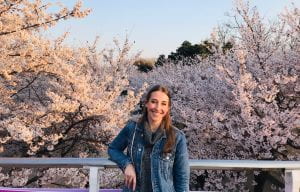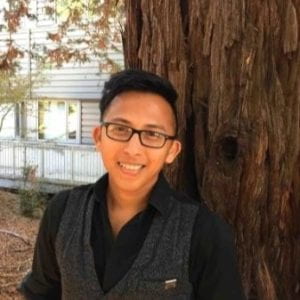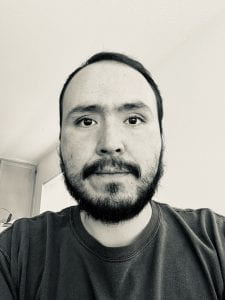Alumni interview with Jack Duff
The WHASC Editors recently got a chance to catch up with Jack Duff, who received his PhD from the Department in 2023. His dissertation (coadvised by Pranav Anand and Amanda Rysling) was entitled “On the timing of decisions about meaning during incremental comprehension.” Since graduating, he has been a Postdoctoral Researcher at Saarland University, where he has continued his psycholinguistic research on the processing and representation of linguistic meaning.
Can you share a bit about your journey from UCSC to your current position at Saarland University?
In May 2023, while I was beginning to write my dissertation, I saw a grant-funded post-doc position advertised here at Saarland with Vera Demberg’s group, on developing computational cognitive models of pragmatic processing. I was a big fan of some of the group’s recent work, and I had already been thinking about computational modeling as another tool I wanted in my toolkit, so it was too good an opportunity to pass up. It wasn’t a perfect match though: the start date was just a few months away, and despite my interest, I hadn’t yet taken on any serious modeling work myself. Still, I sent in a quick application.
After an interview and a job talk over Zoom, I was offered a 2-year position. Thankfully, we were able to negotiate a start date, January 2024, that left me a few extra months to use up my current funding, and finish my dissertation. I did, and since then, I’ve been here in Germany, getting serious about computational modeling, starting projects with this group, and teaching bachelors and masters students in the computational linguistics program, while continuing my other collaborations with people at UCSC and beyond.
What aspects of your graduate studies were most influential in shaping your research career?
I was tremendously lucky at UCSC to work with advisors and mentors on projects across many disciplines. I couldn’t do the work I do today if I didn’t have the diverse practical experience and support that came from those relationships: scheming up processing theories with insight from general cognition with Amanda, building generalizations from careful consideration of heaps of individual examples with Pranav, identifying and honing the core of a argument with Maziar and Ivy, unearthing patterns of data and ideas in unlikely places with Matt and Sandy, keeping pace with new developments in cognitive science with Adrian, the list goes on! No project could ever combine all the research questions I worked on during my PhD, but every project I take on these days benefits from all of those skills.
How has your research focus evolved since you graduated from UCSC? Are there any new areas in linguistics that you’re excited to explore?
As I hoped when I took the job, in my work here at Saarland I’ve been able to work with some new methods in computational modeling for psycholinguistic theories. For instance, in one of my recent projects, I’ve been building models with the cognitive architecture ACT-R to simulate how individual differences in general problem-solving strategies could determine individual differences in responses and response times in an ad-hoc implicature task. I find that these tools don’t change the focus of my work, but they allow a way to formalize and generate exact predictions from hypotheses that otherwise would be too nebulous to propose or defend. (To exaggerate a bit: now that I know my way around these methods, doing psycholinguistics with strictly verbal models sometimes feels like doing syntax without drawing trees!) I’m looking forward to continuing to use these methods to spell out and test theories at the interface between processing and general cognition.
What has been the most rewarding aspect of your academic career so far, particularly in terms of your research contributions?
I’ll need more time and experience to feel like I can identify what has been most rewarding! But something recent that’s been very satisfying has been the joy of working on the same question for long enough to prove myself wrong. (Of course, it turns out this doesn’t actually take all that long.)
In my dissertation, over a couple of experiments, I had tried and failed to find any sign of processing difficulty during reading associated with initially-appealing interpretations of discourse coherence that were ultimately incorrect (e.g. a passage “S1 S2” that initially could, but ultimately couldn’t, describe a causal sequence “S1 because S2”). I thought this might be a firm generalization, that such effects might never exist, and readers could always be somewhat conservative about pragmatic-level decisions of meaning.
But this year, I’ve been working with Daniel Altshuler and fellow recent UCSC alum Kelsey Sasaki, both at Oxford, to continue that search, and recently, we’ve found a few cases where we do observe evidence of processing difficulty, evidently because readers sometimes make rapid incremental analyses in this domain. This has raised all sorts of puzzles (what controls the variation between experiments? task effects? subtleties of stimuli?), and it’s clear that we’ll have much more to do before we can reach a new stable explanation, but there’s a lot of excitement in this re-theorizing, and in feeling the progress towards a more complete picture of things.








